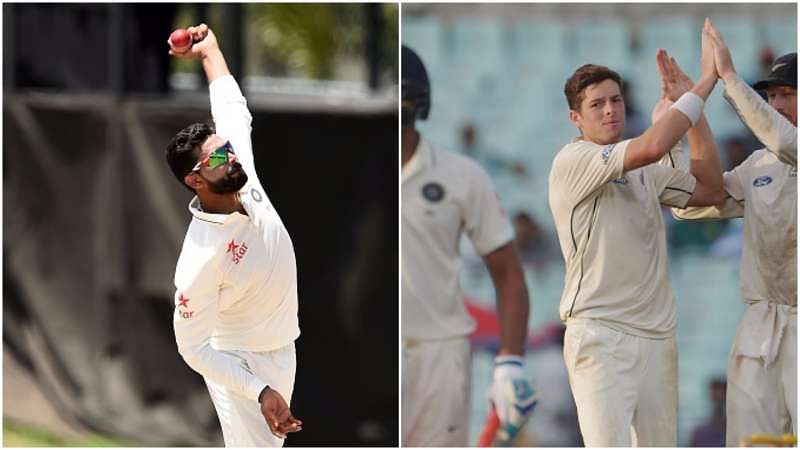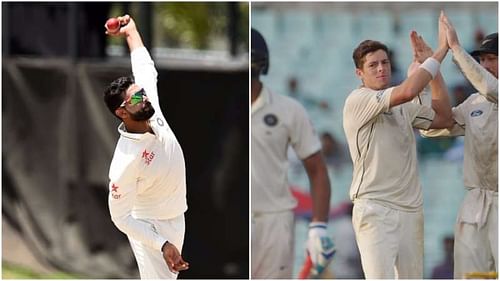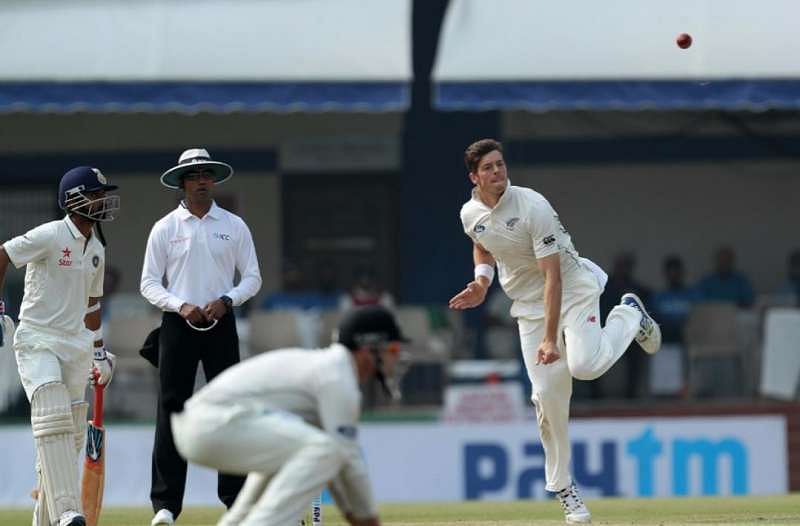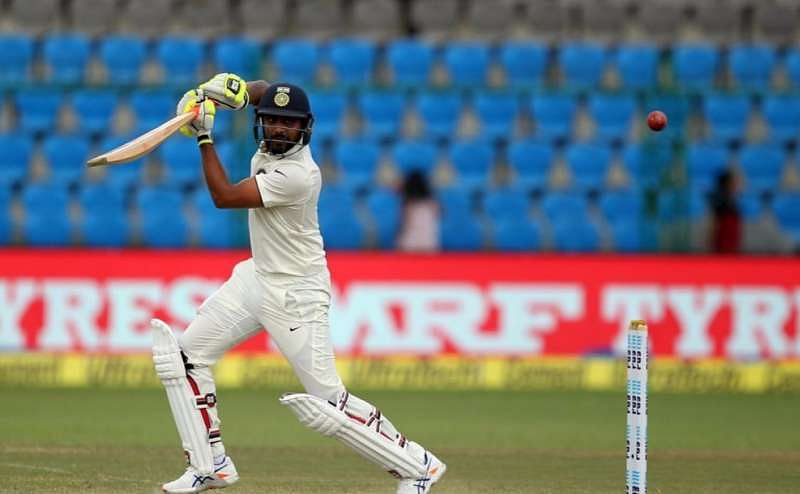
Mitchell Santner vs Ravindra Jadeja: The clash of two lefties
New Zealand landed in India with a Test squad that was tailor made to match India’s team combination – man-to-man. Their spin bowling trio comprised of left arm spinner Mitchell Santner, leg-spinner Ish Sodhi and off-spinner Mark Craig, who later injured himself and made way for Jeetan Patel – all like-for-like to Ravindra Jadeja, Amit Mishra and R. Ashwin respectively.
The Test series was initially billed as a clash of these counterparts. While the series eventually ended a one-sided affair, it should be interesting to have a look at how these one-on-one battles played out.
Ish Sodhi had only one appearance in the series, while Mishra did not feature in any of the matches. And obviously, Ashwin left Craig and Patel behind in competition, by a country mile.
Notable in India’s triumphant bowling performance dominated by Ashwin was Jadeja’s supporting act. While the former wound a web around the helpless Kiwi batsmen, the latter’s role in keeping one end tight and not letting the batsmen off the hook was equally crucial. In contrast, Santner was a lone bright spot in an otherwise disappointing campaign for the Kiwis.
Both are left arm spinners and they are left-handed lower order batsmen as well. While Santner continues to be a part of the subsequent ODI series, Jadeja has been granted a much-needed break in between the busy Test season.
Here’s an analysis of how their Test numbers stack up against each other.
Bowling
In the bowling aspect, Jadeja’s series tally of 14 wickets at 24.07 apiece with one 5-wicket haul clearly places him above Santner’s returns of 10 wickets at 52.40. However, to give more perspective to the numbers, Jadeja is a seasoned campaigner on these pitches while Santner is only 10 Tests young and was on his first Test tour to India.
While the former had the luxury of bowling to batsmen unsure against spin, with Ashwin at the other end also keeping them on their toes, the latter bowled to better players of spin bowling, with pretty much no one else to back him up.
He started off on a decent note, picking 5 wickets in the Kanpur Test but faded away by the final Test, ending up with match figures of 1/208 off 61 overs. However, he did bowl well in patches – a fact the overall stats may not reflect.
Santner is indeed a prospect who holds a lot of promise for the future and the Kiwi can be expected to return as a better bowler with more experience and guile, next time he tours India.
Player | Mat. | Inns. | Overs. | Mdns. | Runs | Wkts | BBI | BBM | Ave. | Econ. | S.R. | 5w | 10w |
Jadeja | 3 | 6 | 144.0 | 39 | 337 | 14 | 5/73 | 6/131 | 24.07 | 2.34 | 61.7 | 1 | 0 |
Santner | 3 | 6 | 155.2 | 25 | 524 | 10 | 3/60 | 5/173 | 52.40 | 3.37 | 93.2 | 0 | 0 |
Batting
Both Jadeja, as well as Santner, came up with crucial batting contributions at certain stages, though in contrasting scenarios that reflected the position of both sides in the series. Santner scored 159 runs in the series, including a fighting 71 in the 1st Test at Kanpur, at an average of 26.5 from 6 innings.
In a series dominated by India, Santner’s counterpart always had a different role to play for India; he was given a free hand to back his attacking instincts.
In the 1st Test at Kanpur, his quick-fire 42 off 44 balls took India past the psychological advantage of having posted a 300+ score in the 1st innings. In the 2nd innings, India were pushing for a quick declaration that could give their bowlers enough time to bowl out the Kiwis, when Jadeja walked in. The lead was already an imposing 333, but a quick 100-run partnership between him and Rohit Sharma in 18 overs gave more impetus to the target, his contribution being 50 off 58 balls at a strike rate of 86.20.
Though he had not much to do with the bat later on in the series, Jadeja had accumulated 129 runs from 5 innings at an average of 64.50 and most importantly, at a strike rate of 78.65 – encouraging signs from one who had not lived up to his batting potential thus far. Much like when he was bowling, Santner always came out to bat when the Kiwis had their backs to the wall.
In the same Test, the Kiwis chasing an improbable 434 for victory had crumbled to 56/4 on Day 4. Santner’s innings of 71, which included a stubborn 5th wicket partnership with Ronchi, had stretched play well into Day 5 and managed to delay the inevitable. In total, he faced over 400 balls for his 159 runs in the series.
Keeping circumstances aside, one will have to give credit to young Santner for encountering the spin demons quite remarkably on his maiden tour to India.
Player | Mat. | Inns. | NO. | Runs | H.S. | Ave. | BF | S.R. | 100s | 50s |
Jadeja | 3 | 5 | 3 | 129 | 50* | 64.50 | 164 | 78.65 | 0 | 1 |
Santner | 3 | 6 | 0 | 159 | 71 | 26.50 | 402 | 39.55 | 0 | 1 |
Head-to-Head
Jadeja and Santner came face to face on several occasions in the course of the series.
On a head-to-head basis, Jadeja faced 35 deliveries from Santner and scored 38 runs at a strike rate of 108.57. In return, the latter scored 35 runs from as many as 84 balls sent down by Jadeja, at a strike rate of 41.66, as much a tribute to Jadeja’s nagging bowling spells as it is to how Santner applied himself at the crease, under the circumstances. Incidentally, both dismissed each other only once during the series. So, there are no clear favourites here.
Career wise, Jadeja is the more accomplished of the two, while Santner is a novice still getting into his stride in international cricket. In time, he could be the ideal man to take forward Dan Vettori’s legacy. For starters, his highest Test score was 45, and his best bowling figures were 2 for 16 before this tour and he’s already bettered that!


